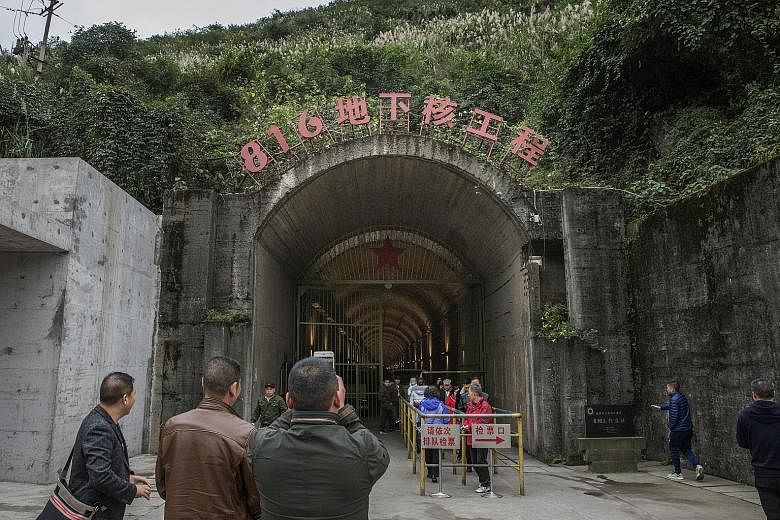FULING (China) • Tree-carpeted mountains rise high in this sleepy Yangtze River district, which is best known for its crunchy pickled mustard tubers. But one of these mountains is not like the others.
On the peak of Jinzi Mountain, a single chimney stands sentinel over the adjacent Wu River. The chimney has been idle since it was built decades ago. Only in recent years has the public learnt why.
Fifteen years ago, the local government announced that inside the hollowed-out mountain lay the remnants of what was once one of China's most ambitious military infrastructure projects - the top-secret 816 nuclear plant.
Initiated in the 1960s, during the height of tensions between China and the then Soviet Union, the 816 project was China's first attempt to build a nuclear reactor that could produce weapons-grade plutonium, without Soviet involvement.
But there was one catch.
To reduce the possibility of an attack, Chinese officials and engineers made the unusual decision to place the reactor underground. The decision added to the complication faced by an engineering process that was already challenging.
Over the next 18 years, more than 60,000 workers took part in the risky project, and some died in the process.
The result was what is said to be the world's largest artificial cave, able to withstand the force of thousands of tonnes of explosives as well as a magnitude-8 quake. But when China began a sweeping civilian defence conversion of many of its military projects in the early 1980s, work on the nearly finished plant was abruptly called to a halt.
For 26 years, it functioned partly as a chemical fertiliser factory before being revived for tourism in 2010 - an improbable twist of fate for this quirk of Cold War history.
Still, for many former workers, the 816 project remains a source of bitter regret. Even as China charges ahead with an ambitious - if controversial - plan to build nuclear plants around the country and expand the use of nuclear energy, once-important military nuclear projects like 816 have been all but forgotten.
Mr Chen Huaiwen, 69, a former soldier who worked on the excavation of the mountain from 1969 to 1974, said: "Back then, the project took so much from many young men, including our livelihoods.
"We need to make this clear to the public. Otherwise, it will have been a huge waste of our efforts and manpower."
To address these concerns, the 816 site recently underwent a year of renovations. Since it reopened in September last year, visitors - including, for the first time, foreigners - can now see about one-third of the cave, which contains about 13 miles (20km) of tunnel roads.
By the time the project was called off in 1984, 85 per cent of the construction had been finished.
Overall, total investment in the 816 project is estimated at more than 746 million yuan or about US$359 million, at the time.
Many were injured or died. Today official figures put the number of fatalities at about 100.
But sunk costs aside, some experts said the decision to abandon the 816 project was ultimately a sound one.
"The only good thing that happened with the project was that they didn't finish it," said Mr Hui Zhang, a senior research associate at Harvard University's Project on Managing the Atom.
NYTIMES

